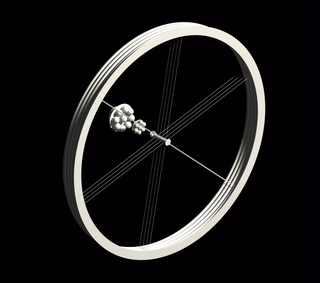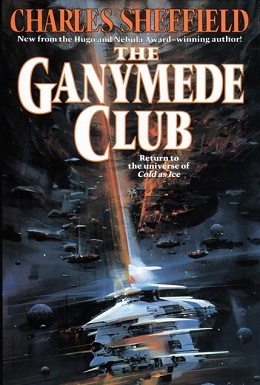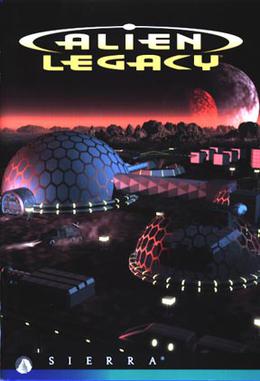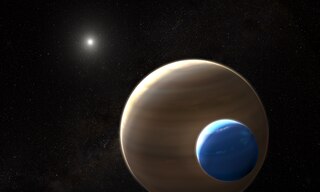Plot summary
Bloom is set in the year 2106, in a world where self-replicating nanomachines called "Mycora" have consumed Earth and other planets of the inner Solar System, forcing humankind to eke out a bleak living in the asteroids and Galilean moons. Two groups of humanity are described—The Immunity, who use "ladderdown" technology and augmented reality and live on the moons of Jupiter, and The Gladholders, who use human intelligence amplification and artificial intelligence and live in the asteroid belt. The story begins on Ganymede with an article about a "bloom", or outbreak of Mycora, that serves to emphasize the danger and horror of this technogenic life (TGL). The article is written by Strasheim, the primary narrator character. He is first seen in the office of Chief of Immunology Lottick, the effective ruler of Ganymede, who has called him there for an unknown purpose.
Lottick tells Strasheim that the Mycora have apparently been stealing or assimilating human designed defensive nanotech and may soon develop resistance to the coldness of the outer Solar System, which incites concern. It is planned to send mission to drop TGL detectors onto the polar ice caps of Mars, Earth, and the Moon, and Lottick asks Strasheim to go along as a reporter. For the longer term, a starship is being constructed to colonize other star systems before the Mycora.
Strasheim agrees, and goes to meet the other crew-members and inspect the ship, which is called the Louis Pasteur . The ship is technologically camouflaged to protect the crew against Mycora. A terrorist attack releases a Mycora bloom in the hangar, killing one crew member and forcing the others to launch the Pasteur and escape—departing three weeks earlier than planned, and without adequate supplies.
Because of their forced launch, the Pasteur docks at Saint Helier, a medium-sized Floral asteroid of the Gladholders to pick up supplies. While there, they are surprised by the culture multiple times, but what shocks them most is that the asteroid's inhabitants have apparently discovered, through powerful telescopes, human life on both Earth and Venus, co-existing with the Mycora.
The "Pasteur" is pursued by ships of the Temples of Transcendent Evolution, a fringe political/religious group that believes the Mycora are divine, investing large sums of money in researching them.
Searching for ways to defend themselves against the Temple ships, the crew discover that the mission has a somewhat more violent purpose than they were led to believe. The "detectors" they have by this time dropped on Mars, Earth, and Luna can actually be repurposed as "cascade fusion" devices.
Shaken, the crew continues on their journey, but become aware that one of the crew is sabotaging the mission. The saboteur turns out to be the Mycorea specialist Baucum, with whom Strasheim has developed a personal relationship. She is secretly a member of the Temples of Transcendent Evolution, and after being discovered, Baucum ruptures a storage bag inside herself that had been carrying spores of Mycora. Terrified, the crew responds, with Strasheim himself shoving her out an airlock before the Mycora now consuming her can also devour the ship.
It is determined that the mission's actual purpose was to use the detector/bombs to establish small footholds on the three planetary bodies, but it occurs to Strasheim that if such a device were detonated in the Sun, a massive blast of laddered-down iron would wipe out most Mycoran life in the inner Solar System. Several of the Temples' ships that have chased them since Mars, are now desperately attempting to destroy the Pasteur against this possibility (The Pasteur is heading toward the Sun to get away from the Mycosystem via an out-of-plane slingshot, but the action could have been construed differently by Temples' agents.).
Having discovered this possibility, the crew decide not to pursue it, but instead transmit the existence of this potential weapon back to the outer Solar System. As a result of the energy of this high power transmition the Mycora break through the hull of the Pasteur, blooming, and unexpectedly assuming the form of a pseudo-human spokesperson. It transpires that the Mycora is sapient and without ill-will toward humans. Communication is brief but paradigm-shattering. The ambassador explains that the majority of persons consumed during the destruction of Earth or on the evacuation out-system was incorporated into the Mycosystem and are still alive in some sense, their consciousness and intelligence adjusted to run on the cellular-automata-like Mycora substrate, or "Unpacked". The crew is given information on how to mark areas as off-limits to the Mycosystem. They are told that humanity is, "...Utterly free. Free to conduct your lives in the classical manner, to escape this solar system, to populate the stars. Free to Unpack, if you choose."
The book ends almost thirteen years later, with a description of how the captain of the Pasteur has been diagnosed with a terminal disease and requests that Strasheim (now a successful media magnate) be his witness as he joins the Mycora. [2]
The Louis Pasteur Spaceship
Named after Louis Pasteur the French microbiologist and chemist, the ship is described as being very small and having an unusual external covering invented by Lehne called the t-balance.
According to Strasheim, the Pasteur is "like a bathroom with seven shower stalls and a streetcar cockpit wedged incongruously at one end, a utility closet wedged in the other." Rather cramped quarters for a crew of seven going on a voyage that will take about two years.
The purpose of the t-balance is to convince the Mycora that the ship is part of it by means of tactile camouflage. It is described as a gleaming rainbow gray colored coating that appeared to be made up of millions of minuscule dots, each of which also appears to be made up of millions of tiny dots, and so on. The t-balance also gives off the illusion that the dots are moving. Unfortunately for the Pasteur's crew, although the t-balance should work in theory, it has not yet been tested because the only way to do so is by surrounding it with Mycora.

















